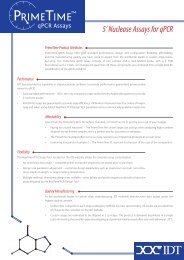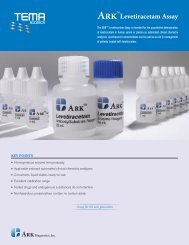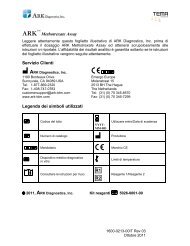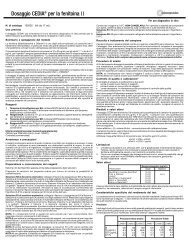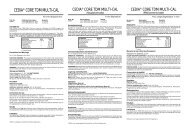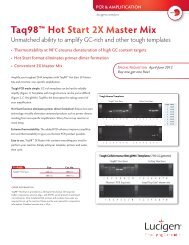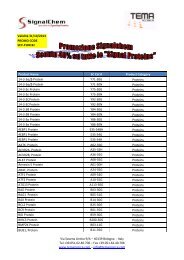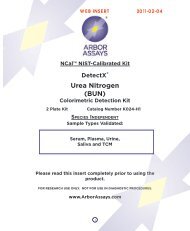PrimeTime® Pre-designed qPCR Assays - Tema Ricerca
PrimeTime® Pre-designed qPCR Assays - Tema Ricerca
PrimeTime® Pre-designed qPCR Assays - Tema Ricerca
Create successful ePaper yourself
Turn your PDF publications into a flip-book with our unique Google optimized e-Paper software.
<strong>PrimeTime®</strong> <strong>Pre</strong>-<strong>designed</strong> <strong>qPCR</strong> <strong>Assays</strong><br />
Design Process<br />
IDT’s design engine incorporates many parameters to produce the best possible PrimeTime <strong>Pre</strong><strong>designed</strong><br />
<strong>qPCR</strong> Assay. The design process uses the most current, clean, and complete target sequence<br />
information and stresses accurate Tm prediction and protection against off-target amplification.<br />
The process includes a wealth of additional secondary design considerations and design<br />
scoring criteria focused on isolating the best performance potential for a specific target design.<br />
Current target sequence information<br />
Access the most current<br />
sequence data available<br />
• The IDT design engine runs against the cleanest possible target data that<br />
include up-to-date SNP and intron/exon junction locations.<br />
• The design libraries are continually refreshed as new sequence data<br />
become available.<br />
Melting temperature (Tm)<br />
Design assays with<br />
accurate Tm for primers<br />
and probes<br />
• Accurate prediction of Tm is essential for precise PCR performance.<br />
• The assay design engine incorporates the most currently available Tm<br />
prediction algorithms and nearest-neighbor parameter sets.<br />
• IDT continues innovative DNA thermodynamics research and integrates<br />
those improvements into its calculation and oligonucleotide design tools.<br />
Cross reaction and off-target amplification prevention<br />
<strong>Pre</strong>vent cross reaction<br />
and off-target<br />
amplification, mask<br />
SNPs<br />
• Proprietary assay design engine algorithms and BLAST alignments check<br />
the target sequence to protect against cross reaction and off-target<br />
amplification.<br />
• The algorithms reduce potential off-target amplicon formation, as well<br />
as individual element non-specificity that can compromise efficiency by<br />
consuming assay components through off-target interactions.<br />
• The Assay design engine ensures that primers or probes are not placed on<br />
SNP locations.<br />
Score remaining<br />
assays and publish<br />
to web<br />
Scoring and Publishing<br />
The main assay design engine algorithm is tuned to aggressively “over-design”.<br />
-<br />
This produces dozens of possible assay options for each target which are then<br />
carefully weighed for selection of those with the best overall performance<br />
and reliability characteristics. These selection criteria include examination of<br />
characteristics such as poly runs, short sequence repeats, and hetero-dimer and<br />
homo-dimer folding energies.



